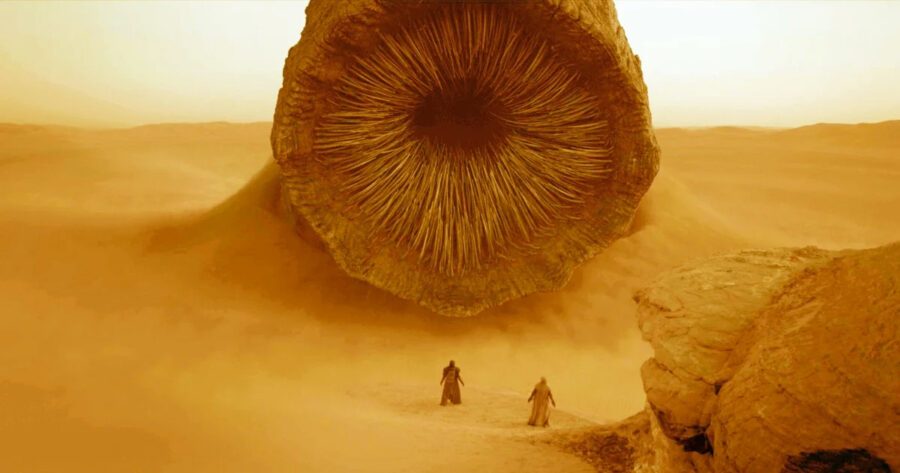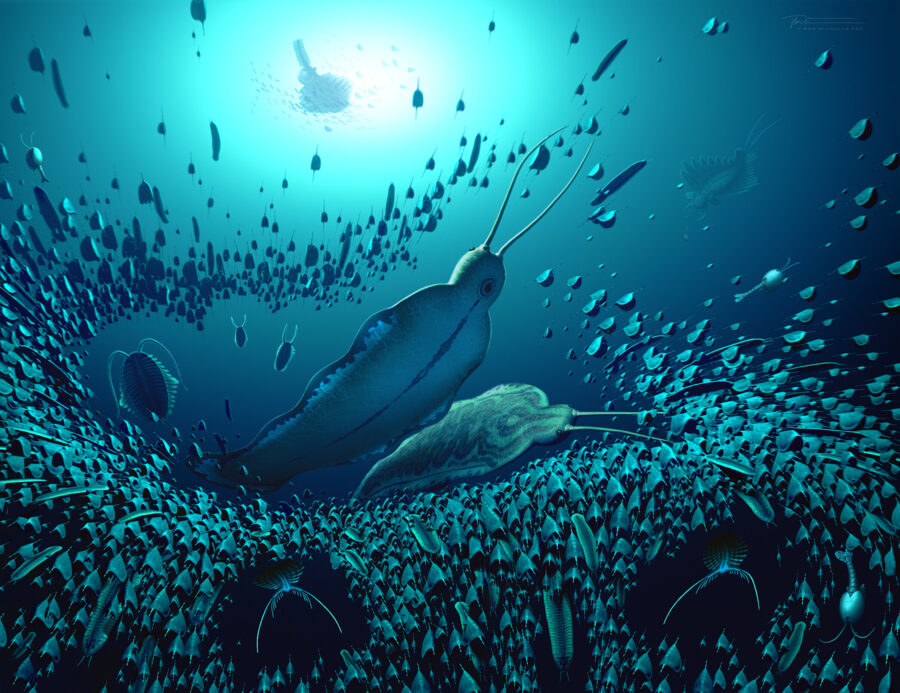Gigantic Terror Beast Worm Discovered In Greenland

Before the mammals took over planet Earth as the dominant class under the kingdom Animalia, and long before the planet was ruled by dinosaurs, our homeworld was more of a worm-world. Ruled by wiggling tube-shaped creatures and primordial worms, this ancient animal kingdom was ruled by a giant terror beast worm, which has now been found in fossil form.
The terror beast worm possessed relatively gigantic jaws, long antennae, and rippling fins, which made it a formidable enemy of anything that made its way into the waters it inhabited.
The discovery of the terror beast worm, aptly named Timorebestia (“terror beast” in Latin), was made in North Greenland by a team of researchers led by experts at the Korea Polar Research Institute (KPRI). This absolute behemoth of a carnivorous worm ruled the Earth some 518 million years ago.

It measured some 30 centimeters (less than a foot long), which made it, at the time, one of the largest swimming animals of the animal kingdom—so large that it was close to the very top of the food chain of the time.
The terror beast worm possessed relatively gigantic jaws, long antennae, and rippling fins, which made it a formidable enemy of anything that made its way into the waters it inhabited. Their size and anatomy make them equivalent in importance to some of the top carnivores in modern oceans, such as megalodons and other marine vertebrates of the Cambrian period that succeeded the era of the terror beast worm.
The terror beast worm had quite a long reign over the Earth as the dominant predator before anthropods and, eventually, vertebrates took over both the oceans and the land.
Interestingly enough, researchers found food remains in the digestive systems of some fossils, suggesting that the worm fed on bivalved anthropods.
Just like Amphicotylus Milesi still has living relatives in the modern era, including crocodiles, the closest living relatives of the terror beast worm are known as the arrow worms, and they’re quite tiny compared to other animals swimming in the ocean.
However, they’re still an important link in the modern food chain, as they’re picking on the foundational prey like zooplankton. The fossils of their ancestors date as far as 538 million years, which is some 20 million years older than the recently discovered fossils.
Scientists still believe that the era of the terror beast worm has set the stage for the evolutionary jump in our planet’s history.
This is a rather interesting fact because it allows researchers to conclude that the terror beast worm had quite a long reign over the Earth as the dominant predator before anthropods and, eventually, vertebrates took over both the oceans and the land.
Ultimately, they weren’t the only apex predators that were knocked off the top of the food chain since the rapid evolutionary diversification that occurred during the Cambrian Explosion dramatically reshuffled the food chain and the dominance hierarchy on the planet.
Scientists still believe that the era of the terror beast worm has set the stage for the evolutionary jump in our planet’s history, with many experts arguing that the explosion of life on our world happened because these ancient worms started exhibiting new behaviors, hunting and protection strategies, and eventually new physiologies.
This increased the diversity of the ocean ecosystem, and though it sounds rather simple on paper, the process took tens of millions of years before the curtain call of the Precambrian even occurred.
It’s interesting to learn how the very planet we call home was once dominated by giant lizards that were the dinosaurs, who actually succeeded it from tiny, barely a-foot-long terror beast worms that are now known as fish and seabird food.
Source: Science Advances












